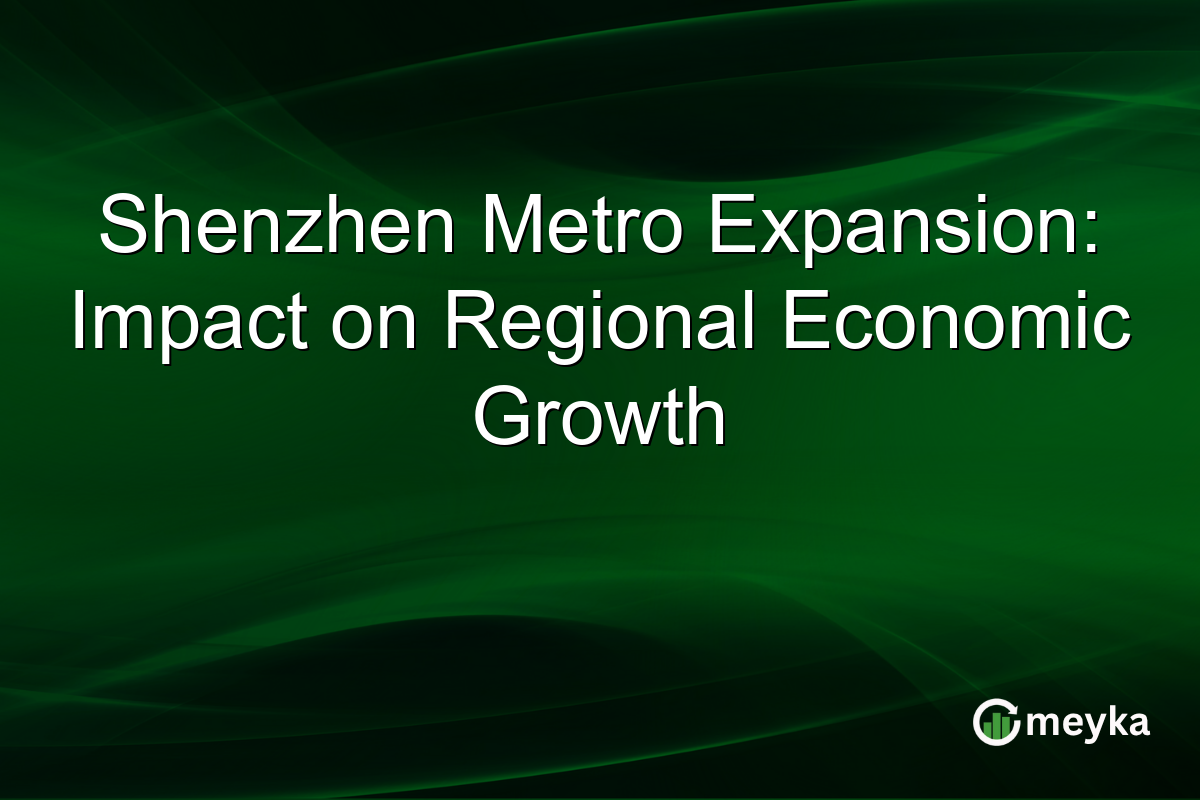Shenzhen Metro Expansion: Impact on Regional Economic Growth
The Shenzhen Metro Expansion, a core component of China’s urban infrastructure development, reflects the country’s commitment to enhancing regional economic growth. As Shenzhen evolves into a pivotal urban hub, the metro system’s development highlights strategic public transit investments. A rapid transit network not only links communities but also fuels economic activity, supporting China’s broader economic ambitions.
The Role of Urban Infrastructure in Economic Growth
Urban infrastructure development, particularly in transit systems, plays a crucial role in economic expansion. The Shenzhen Metro Expansion exemplifies how such projects stimulate growth. By 2030, the metro network aims to cover over 1,000 kilometers, integrating more than 500 stations. This extensive reach not only improves commute efficiency but also transforms inaccessible areas into economic hotspots. The strategic expansion supports local businesses, increases real estate values, and enhances retail activities.
Latest on Reddit: Discussions about Shenzhen Metro Expansion and its local impact.
Linking urban centers creates a supportive ecosystem for businesses and job creation, driving economic growth in the region.
Public Transit Investments in China
China’s dedication to public transit investments is evident in projects like the Shenzhen Metro Expansion. It symbolizes a broader national strategy to boost urban mobility and sustainability. The metro expansion facilitates efficient movement for millions, promoting a greener transportation alternative. This commitment signals to domestic and international investors that China prioritizes infrastructure as a foundation for economic sustainability.
For investors, the growing transit network presents opportunities in real estate and retail development. It attracts investment in surrounding areas, transforming Shenzhen into a vibrant economic hub. The impact extends beyond local growth, reinforcing China’s position as a global economic powerhouse.
Economic Impacts of the Shenzhen Metro Expansion
The economic impacts of the Shenzhen Metro Expansion are multifaceted. The project is anticipated to generate employment during construction and post-completion in areas such as maintenance and operations. Analysts expect a ripple effect in regional GDP growth, bolstered by enhanced business operations and tourism.
In addition, this expansion engages with transit-oriented development, fostering urban areas that are dense in both population and economic activities. These developments are not just regional enhancers but contributors to China’s national economic objectives. As infrastructure is strengthened, the overall productivity and economic output of Shenzhen are likely to see significant improvements.
Final Thoughts
The Shenzhen Metro Expansion is a testament to effective urban infrastructure development, marking a shift in how cities can strategically enhance economic growth. By creating a robust transit network, Shenzhen is setting a precedent for other cities in China. The project not only aims to improve local transportation but also intends to stimulate regional economic activities, contributing to the national economy. Importantly, public transit investments like this underscore China’s commitment to sustainable growth, making Shenzhen a model of modern urban development. As the metro expansion progresses, we can expect significant boosts in economic activities, from real estate to retail, which will, in turn, support China’s broader economic objectives. The continuous investment in transit systems remains a cornerstone in paving the way for sustainable urban and economic growth.
FAQs
The Shenzhen Metro Expansion is significant as it enhances urban connectivity, stimulates regional economic growth, and attracts investments. It improves public transit, reduces traffic congestion, and supports sustainable urban planning.
Urban infrastructure development improves efficiency, supports business operations, and attracts investments. In the case of the Shenzhen Metro, it increases accessibility, fosters economic activities, and elevates real estate values, driving regional economic growth.
The expansion creates numerous investment opportunities, particularly in real estate, retail, and transport-related sectors. Improved connectivity enhances business potential in surrounding areas, attracting both local and international investors.
Public transit investments reduce carbon emissions, decrease traffic congestion, and promote a healthier environment. Efficient systems like the Shenzhen Metro encourage public transportation usage, reducing reliance on private vehicles.
The broader implications include job creation, increased regional GDP, and enhanced urban development. By linking key economic hubs, the metro expansion contributes to national growth, underscoring China’s economic strategy.
Disclaimer:
This is for information only, not financial advice. Always do your research.






